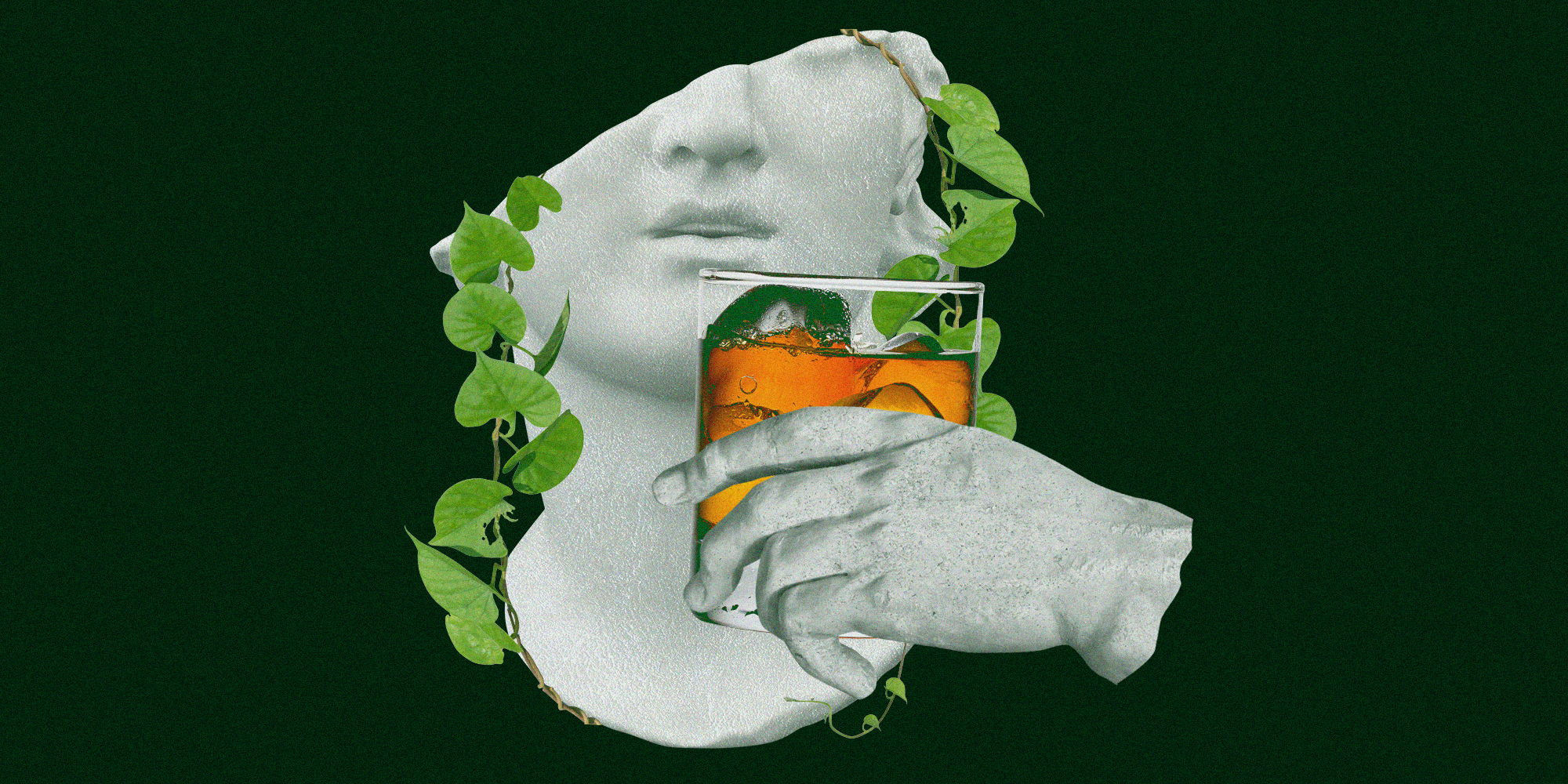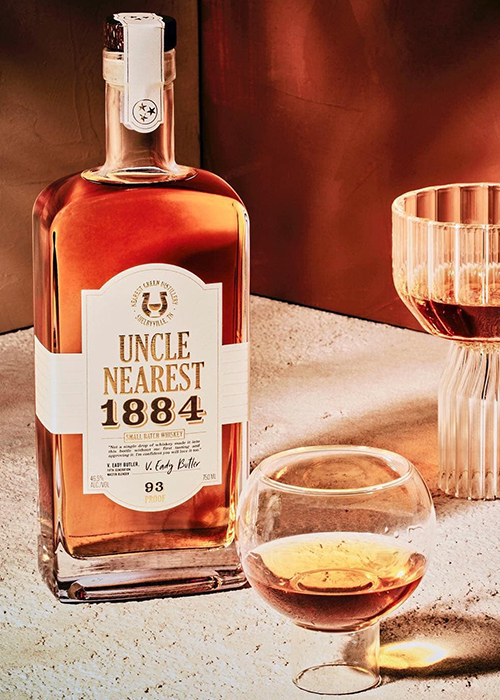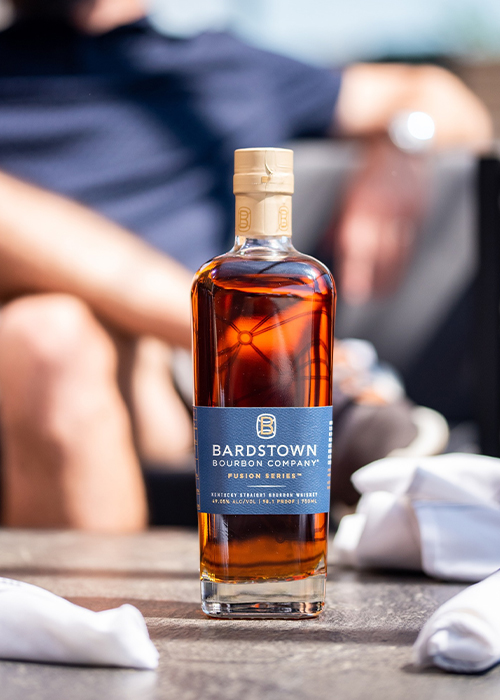In American Whiskey, Is Heritage Everything?

Heritage storytelling in American whiskey marketing is about as old as, well, some brands claim to be. Whether they label themselves as the first since Prohibition or part of a long whiskey-making lineage, history is almost always front and center. But why?
According to distillery owners and brand strategists, it’s to prove authenticity and quality in an age-old industry.
“The history of whiskey is really the history of this country. If you look at any history book, and dive deep enough, there’s whiskey involved in some way, shape, or form,” says Preston Van Winkle, brand manager at Old Rip Van Winkle Distillery. “It’s a big part of who we are and what we do and it’s fun to be a part of such a historical industry.”
The complicated relationship between marketing and consumer demand is what makes the bourbon market both unique and fascinating — not to mention the time-intensive nature of the bourbon-making process. Unlike most consumer products, bourbon takes anywhere from two to 25 years to be shelf-ready, which means marketing for the product takes many forms; it’s hard to predict who the target consumer will be by then — or if people will even still care.
“I think the reason that whiskey brands invest so much in the history aspect is because whiskey is a commodity that ages,” says Colin Spoelman, co-founder and head distiller of Brooklyn’s King’s County Distillery. “It suits the storytelling to talk about history because, inevitably, that’s going to sort of whet your appetite for this thing that’s been sitting in a barrel for five or more years.”
Not every new distillery is blessed with a rich history to build its marketing strategy on. But without history, what other story is there to tell? What other factors go into marketing whiskey today? And, most importantly, what does this mean for the future of the category?
Making (Up) History
While most people would not argue that Kentucky is the bourbon capital of the world, many of the companies that own and market the most well-known brands are based elsewhere — some even overseas.
Due to the expansive product portfolio and global presence of conglomerate spirits companies, many individual brands feel that authenticity gets lost, especially with storytelling. While some of the stories told by brands owned by larger companies can be traced back in history, there are some that can’t be.
This bothers Spoelman.

“The reason I got interested in distilling in the first place was because I noticed that in Kentucky there was a lot of storytelling around history, but none of it had any credibility,” he says. “It was largely these giant corporations, many of them not even based in the United States, misunderstanding their own brands.”
One Heaven Hill Distillery spokesperson with 17 years experience, who wishes to remain anonymous, says that while history should be considered in brand messaging, the marketing strategy sometimes strays from actuality.
“Part of it is smoke and mirrors. Part of it is that some of this might be bullshit. You can’t tell everything about every family secret or mash bill or recipe. So sometimes you use marketing speak for brands,” they say.
Which isn’t to say all brands housed under larger companies employ similar marketing tactics. Pappy Van Winkle, for example, is produced by Buffalo Trace Distillery, which is owned by New Orleans-based Sazerac Company. But the brand’s well-known history and family legacy — four generations of bourbon-making in Frankfort, Ky. — need no additional ‘marketing speak’ to sell.
“It’s unfortunate that there are companies that get away with some sort of made-up narrative based on a name they pick out of a history book that really doesn’t have anything to do with the actual product,” says Van Winkle. “They take it and weave this tale that may or may not have any basis in reality.”
A New Bourbon Consumer
Heritage aside, over the last 10 years, the average bourbon consumer has changed. And as a result, the approach to marketing — and therefore storytelling — has changed as well.
“The bourbon consumer today is more educated about the spirit in general. They are younger and a lot more women are drinking bourbon. When I started in this business 20 years ago, and went to trade shows it was 90-95 percent men and more recently, it’s maybe 60 percent,” says Van Winkle. “A lot more women are drinking bourbon. And I think that has a lot to do with the fact that the knowledge around whiskey in general has changed — it’s no longer your grandfather’s spirit.”
Over the past decade, the industry has seen an influx of new, diverse consumers who are buying bourbon. According to data from consumer insights firm MRI-Simmons, the number of Black or African American individuals who drink bourbon was up 22 percent from 2013 to 2020, while the number of Asian individuals who drink bourbon was up 36 percent.
Founded in 2017, Uncle Nearest Premium Whiskey is an award-winning African American–owned distillery. Its founder, Fawn Weaver, created the company in honor of Nearest Green, nicknamed ‘‘Uncle Nearest,” who taught Jack Daniel how to make whiskey, later being deemed the first African American distiller.
“When you look at the data that we collect, through our programmatic ads and so forth, we definitely over-index women and people of color,” says Lucia Creed, director of marketing at Uncle Nearest. “We still have a very large white male consumer audience, which we definitely want to keep, but the amount of women, younger people, and people of color, for us, is much higher.”
In order to reach its diverse audience and potentially attract new whiskey drinkers, Creed says Uncle Nearest increases brand storytelling around Black History Month, Women’s History Month, and Bourbon Heritage Month.
As the lineages of bourbon’s founding fathers begin to dwindle and the market becomes even more robust to meet growing demand from more and more consumers, how can distilleries set themselves apart while capturing the tradition of America’s native spirit?
For Bardstown Bourbon Company, this means pushing the boundaries of what it means to be a distillery in Kentucky. Unlike most distillery websites, you won’t find a lengthy history of the whiskey brand. Instead, its about page reads: “Creating the modern, authentic bourbon experience. The Bardstown Bourbon Company is a New Blend of Bourbon Makers, pushing the boundaries through innovation, while honoring the traditional art of whiskey making.”
“We bring a lot of people with experience in, and then try to innovate with traditional roots,” says Brandon Smith, digital media manager at the Bardstown Bourbon Company. “What we do as a brand is very much push the boundaries of innovation and discovery through our blending processes and with collaboration by bringing in other storied brands.” The distillery prides itself in partnership; it has worked with companies such as Phifer Pavitt Wine, Château de Laubade, and Plantation Rum to create whiskey blends through its collaboration series. “What’s unique is that we get to tap into their audience of passionate followers and collaborate with them,” Smith says. “It’s a very innovative philosophy within the bourbon industry.”
No matter how innovative a distillery can be, though, most would agree that storytelling still needs to be top-of-mind.

“I think that for new brands coming in, they’re going to have to either get very creative in terms of how they market, which most often won’t be a heritage story, because it’s hard to come up with those — those brands already exist …[and] it’s hard to go back in time and find these uncovered gems like we have,” says Creed of Uncle Nearest. “I think that you will start to see brands like Du Nord and different brands that may not have the historical component of heritage, but are African American-owned or female-owned and tapping into a more modern heritage story,” she says.
But that doesn’t necessarily mean it’ll help the brand sell. Not yet at least. And for brands newer to the market, this could mean finding and engaging consumers who are new to the category and brand-building from there. For Uncle Nearest, Creed says a more tailored and personal approach is key to attracting and keeping new whiskey drinkers.
“During a whiskey tasting I will ask [the customer], ‘OK, what don’t you like about it?’ There are so many different kinds of whiskeys. ‘Tell me what you usually drink and we can go through and find a whiskey that you like,’” says Creed. “Often we would find many that they’d like and they would say, ‘Wow, I had no idea whiskey could taste this good. Nobody’s ever marketed it to me like this. I always thought that it was something that was just for men.”
Because in the end it’s all about the experience, and these details enhance the experience. They can come from a heritage story, but new brands will need to find other ways to captivate the imagination of consumers.
“We’re trying every day to find that perfect balance between 150 years ago and now. We have a master distiller with a lot of history-making herself and so I think every day, we try to find the perfect balance between our history and our products,” says Zoie Wilson, director of marketing at Old Dominick Distillery in Memphis, Tenn. “But then I think we weigh that by figuring out what the consumer wants, so that’s what we need to deliver.”
While bourbon will always be written into the history books, as the industry and consumer continue to evolve, trailblazing distilleries will begin to craft their own chapter.
“I do think, ultimately, craft distillers will find their audience — a huge audience — and find, in fact, that the same people excited about Pappy Van Winkle today, in 20 years, they’re going to be excited about King’s County and Wilderness Trail and maybe New Riff and Peerless [Distilling Co.] and some of the smaller, newer distilleries,” says Spoelman. “Novelty is on a 25-year cycle in whiskey, not a six-month cycle.”
